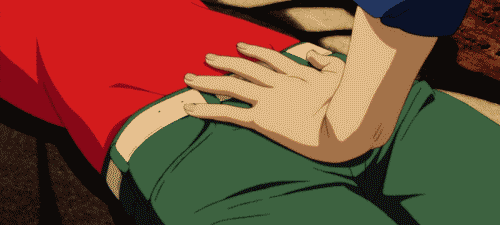
‘Satoshi Kon, who died of pancreatic cancer aged 46, was one of the boldest and most distinctive film-makers to specialise in animation. His main body of work – four completed feature films and an acclaimed television mini-series – was playful, sophisticated and adult. Tired of the cliches of mass-produced Japanese animation – “robots and beautiful little girls,” as he once put it – Kon sought to make animation that used ambitious and often disorientating editing, intercutting and scene-shifting.
‘”In animation, only what is intended to be communicated is there,” he once said. “If I had a chance to edit live-action, it would be too fast for audiences to follow.” Kon made only sparing use of CGI in his mostly drawn films, relying on such superb animators as Shinji Otsuka and Toshiyuki Inoue.
‘Much of Kon’s animation combines realistic drama (usually set in present-day Tokyo) with dreams and fantasy. This approach culminated in his dazzling 2006 film Paprika, which received a standing ovation at the Venice film festival. Four years before Christopher Nolan’s Inception, Paprika portrayed a puckish “dream detective” shimmying through the subconscious fantasies of other people. Nolan has acknowledged Paprika as an influence, but Kon’s film has far more fun with its dream worlds. Its titular heroine dashes through paintings and signboards while transforming into everything from a fairy to a mermaid to Pinocchio.
‘Kon thought that people lived in multiple realities, such as those of television, the internet and the realm of memory. “The human brain is mysterious; we can’t share the time axis in our memory with other people,” he said. “I’m interested in trying to visualise those nonlinear ways of thinking.” The first feature he directed was a Hitchcockian psycho-thriller, Perfect Blue (1997), about the mental disintegration of a young actor after she takes part in a lurid rape scene.
‘Perhaps the only effective horror film in animation, Perfect Blue was graphically explicit and psychologically disturbing. Asked about its 18-rated gore, Kon said he was not particularly interested in the violence. “However,” he said, “if the story or the character or the expression of a mental state requires a violent expression, then I wouldn’t hesitate to use it.” In contrast, Kon’s next film, Millennium Actress (2001), was a lyrical magic-realist romance. In it, another starlet – who resembles the reclusive Setsuko Hara, star of Yasujiro Ozu’s Tokyo Story (1953) – obsessively searches for her lost wartime love, racing through movies and memories as if they were the same thing.
‘Tokyo Godfathers (2003) proved to be another change of direction, a Frank Capraesque Christmas comedy about three homeless people trying to return an abandoned baby girl to her family. The film also had the same basic plot as 3 Godfathers, John Ford’s 1948 western. Despite its humour, Tokyo Godfathers was upfront in showing its characters’ harsh situation. This social commentary was also overt in Kon’s Paranoia Agent (2004), a 13-part late-night miniseries, in which Tokyo is terrorised by a homicidal little boy with a baseball bat. Coming after a wave of much-publicised youth crimes in Japan, this was a near-the-knuckle subject for television animation. The darkly funny show soon turned fantastical, with shades of Twin Peaks and The X-Files, and macabre subplots about suicide clubs and repressed housewives.
‘After Paprika, Kon began The Dreaming Machine, which promised to be his biggest departure – a film suitable for both adults and children, set in a fanciful future with an all-robot cast. It seems likely that the film will be completed by Kon’s artists and released by the Madhouse studio, which has handled all of his work since Perfect Blue.’ — Andrew Osmond
___
Stills

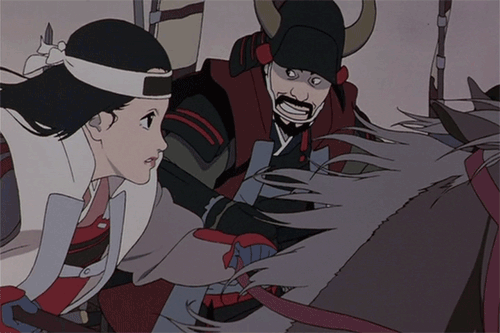
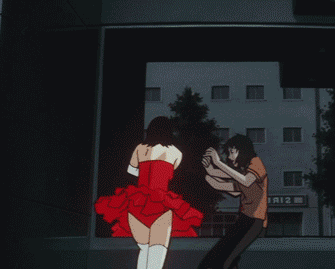

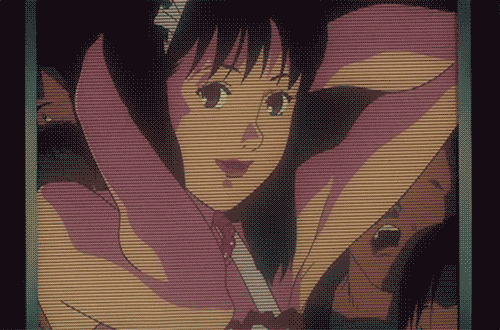
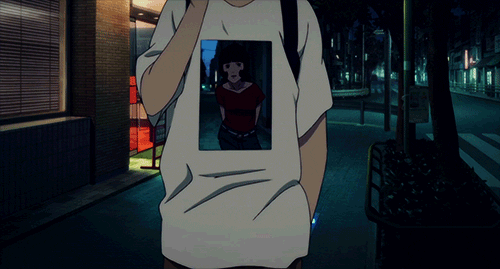
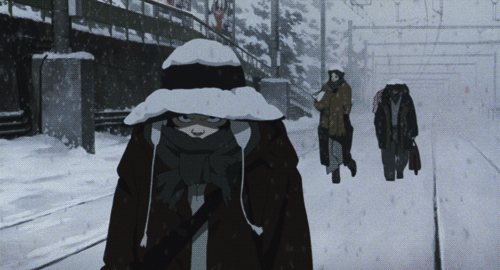
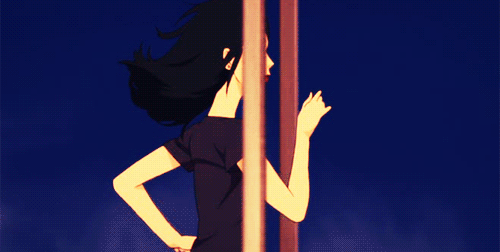
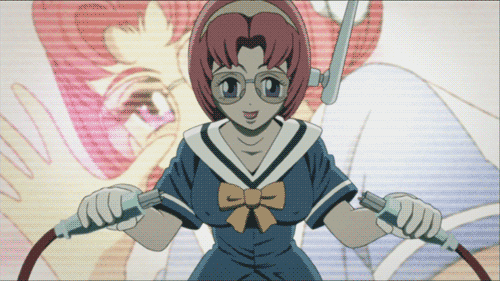
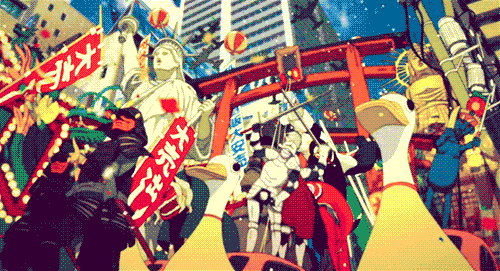

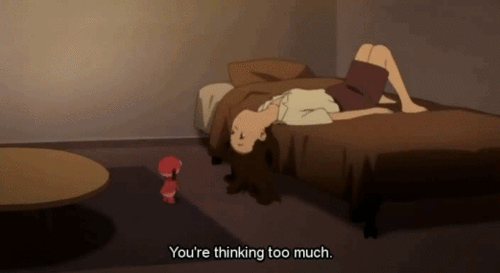
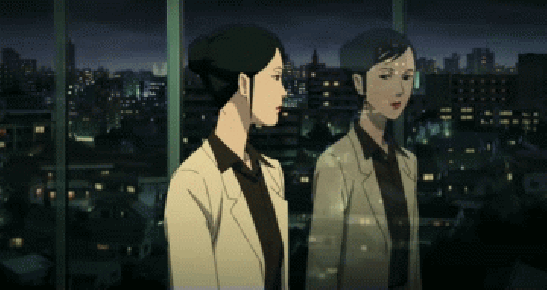
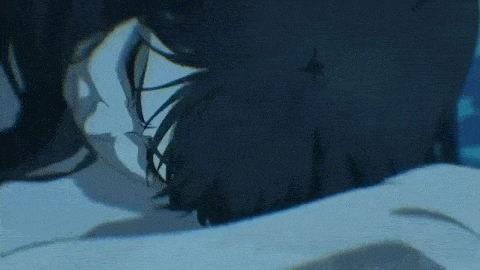
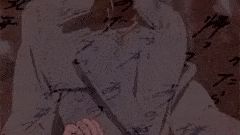

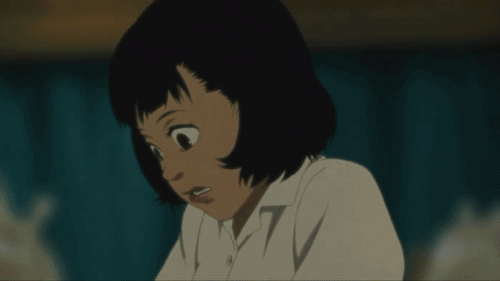
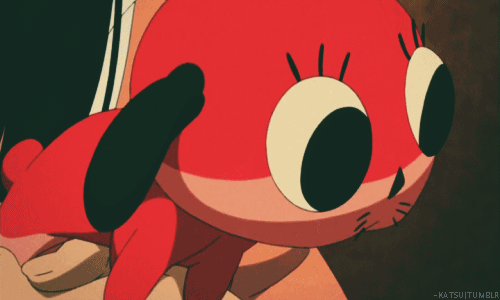
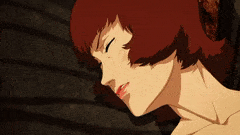



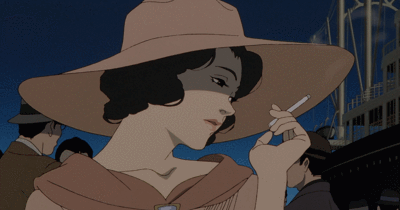










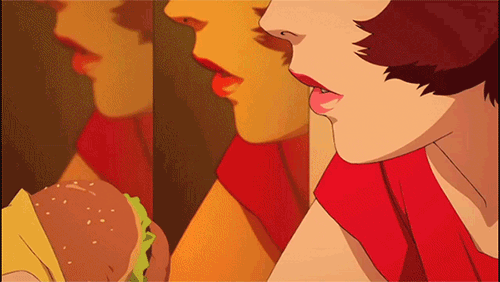

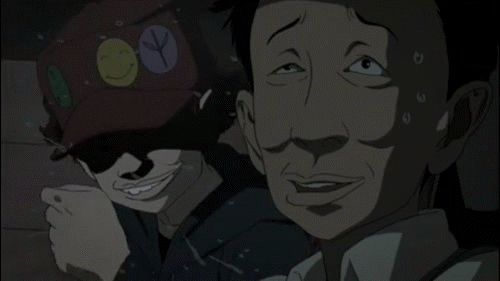

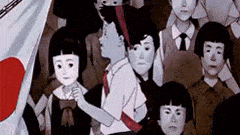

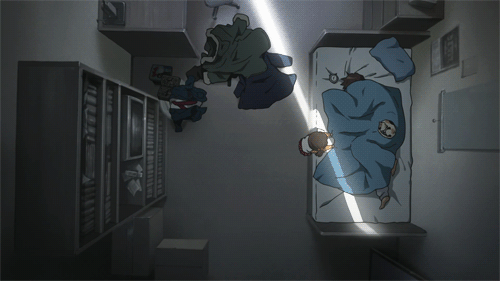



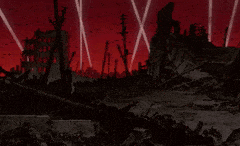



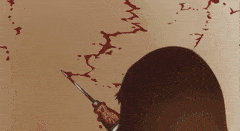

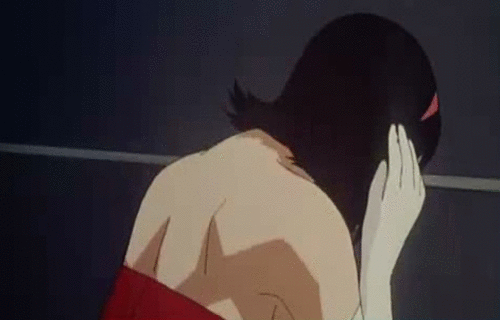
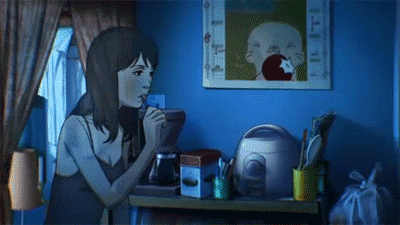
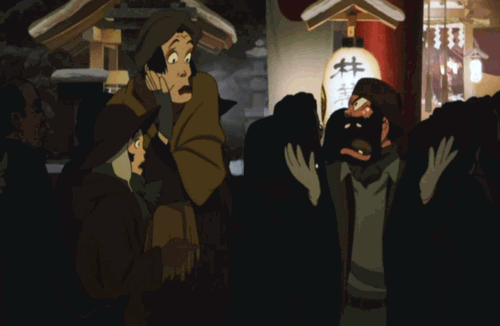

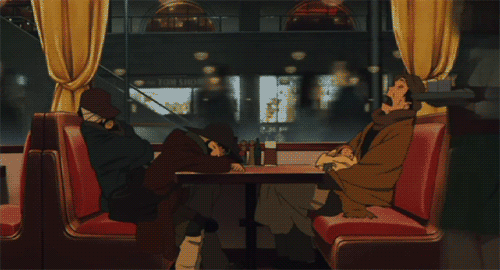
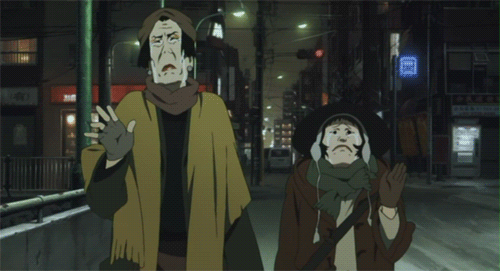
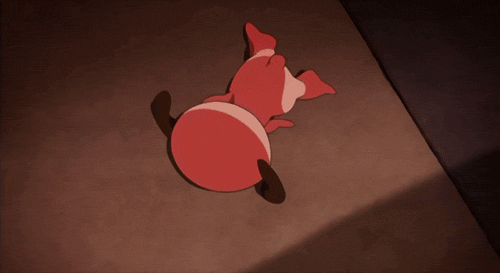


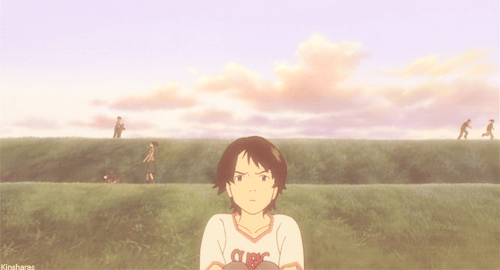



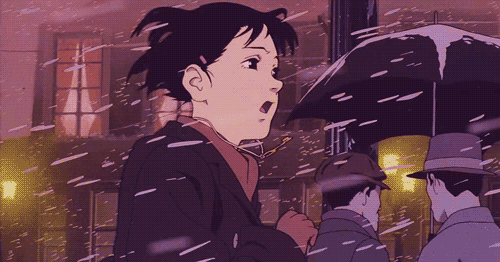
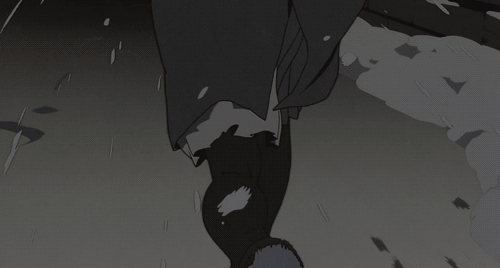

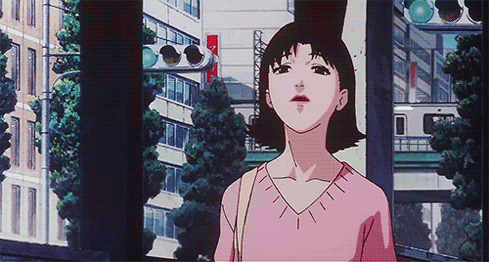
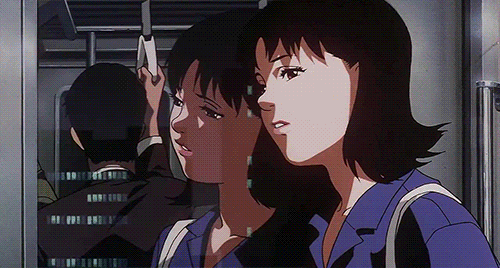



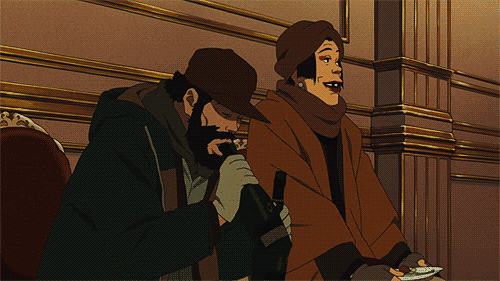
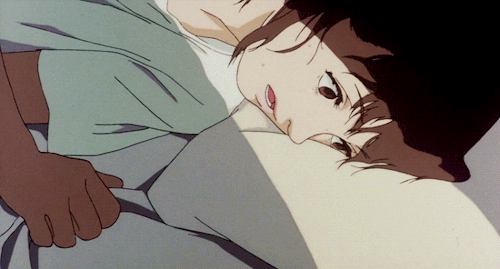

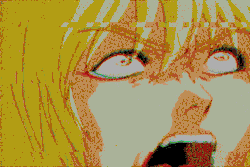
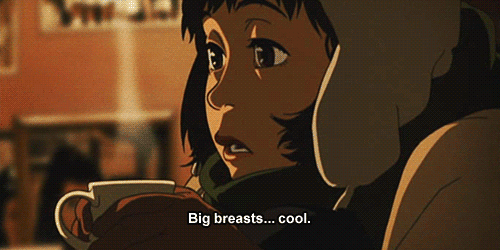
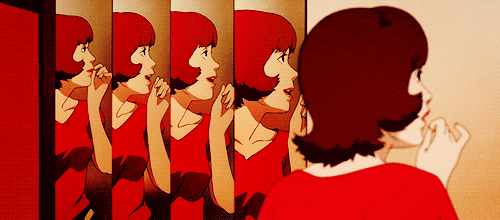

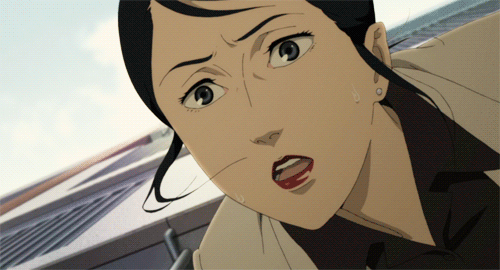

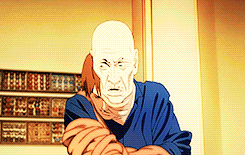
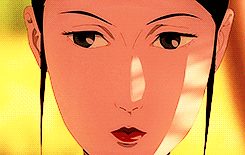




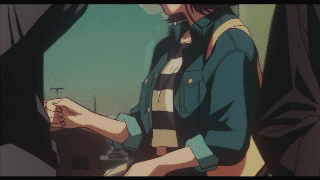



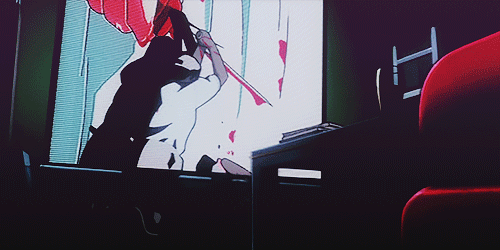

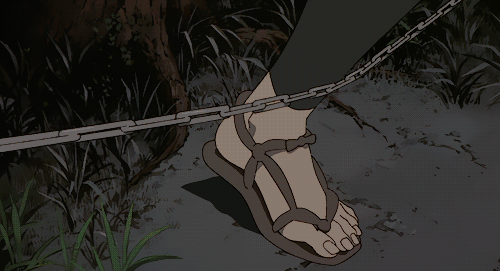


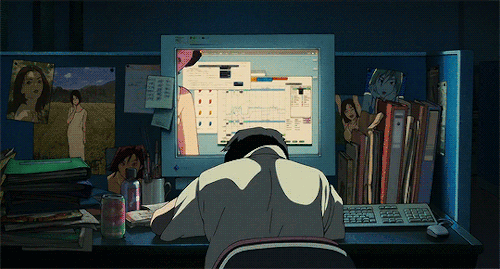

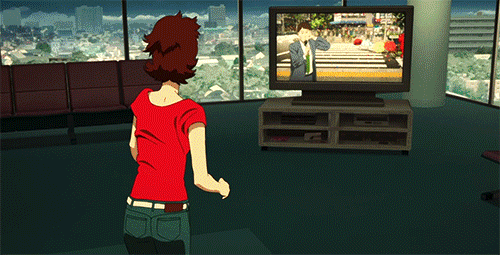

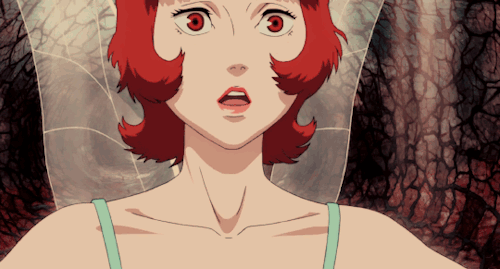
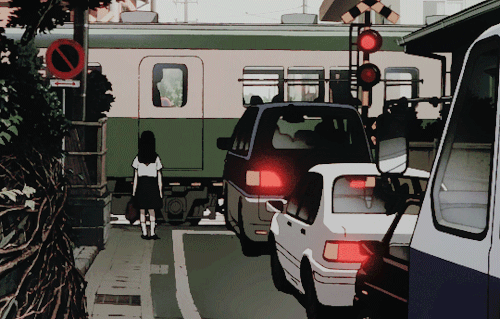
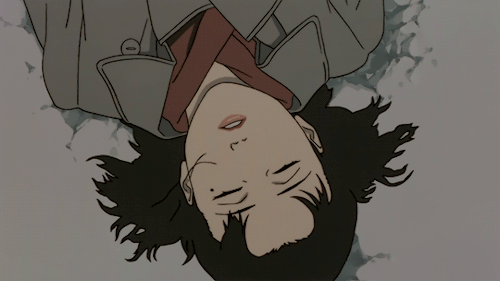


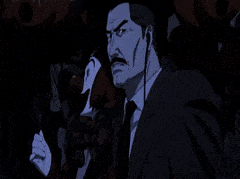
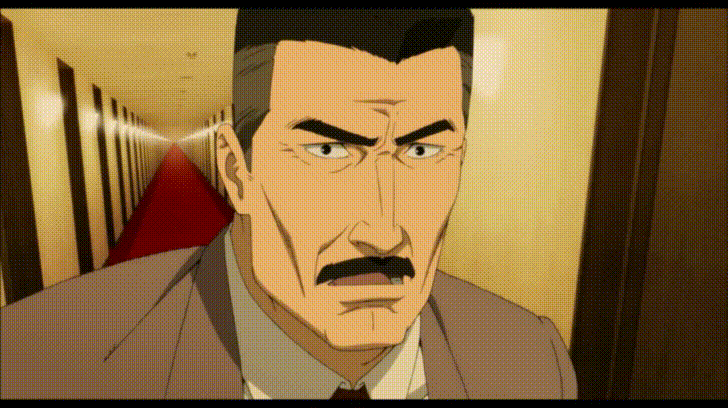
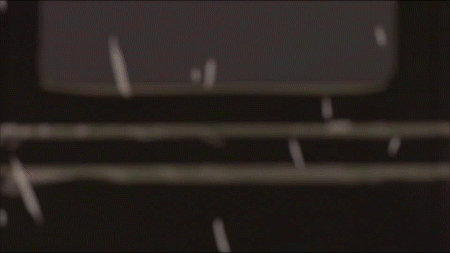
_____
Further
Satoshi Kon Personal Website
English translation of SK’s last words
SK interviewed
‘FOND FAREWELL: Satoshi Kon
Satoshi Kon Wiki Community
Fuck Yeah Satoshi Kon
Satoshi Kon Facebook page
Official ‘Paprika’ Website
‘Dark Horse to publish Satoshi Kon’s Opus, Seraphim’
‘Satoshi Kon’s Posthumous Work Machine That Dreams May End As Dream’
SK’s manga ‘Tropic of the Sea’
Book: ‘Satoshi Kon: The Illusionist’
Satoshi Kon’s List of 100 Films
A tribute by French artists to Satoshi Kon
‘”He’s the Internet”: A Conversation on Satoshi Kon’
SATOSHI KON – AN ANIMATED TRIBUTE
‘Satoshi Kon Explores the Insanity of Japan’
‘Satoshi Kon’s Unfinished Symphony’
‘Satoshi Kon’s Theory of Animation’
‘The Dreams of Satoshi Kon: Chapter I – Prehistory’
____
Extras
Satoshi Kon – Editing Space & Time
Perfect Blue: Interview with Director Satoshi Kon
Greatest Film Directors: Satoshi Kon
Rest In Peace Satoshi Kon
______
Interview
from Midnight Eye

I’d like to talk about the genesis of Paprika. I know that you met Yasutaka Tsutsui, the author of the original novel, in 2003 and that he wanted you to make his book into a film.
Satoshi Kon: That was the first time we met each other and I thought perhaps as a gesture of goodwill or business manners that he would say something like that, but perhaps in the back of his mind he was considering it. I was already a fan of his work, so I was glad to meet him.
Once he did give his blessing to make the film, did pre-production start soon after that or did it start the wheels in motion for production of the film?
SK: At the time of our meeting, the Paranoia Agent TV series was still in production. Completing that series was the first commitment for Madhouse. We were thinking of a project that we could realistically begin developing soon after Paranoia Agent, so it happened quite naturally. We started developing Paprika while we were still in production on Paranoia Agent.
If you had not got his blessing, would you not have made the film?
SK: I don’t think I would have. As a film based on someone else’s story, without that meeting and blessing from the master, I probably wouldn’t have made the film.
Fate, perhaps?
SK: Of course there is an element of fate, but in order for a film to come into existence it has to go beyond that. When fate happened to bring us together, I started to think about what the meaning was for me to make Paprika at that moment. All of the films I had made up until that point – Perfect Blue, Millennium Actress, and Tokyo Godfathers – were made through a very realistic method of representation, and the themes and subject matter were also quite realistic. I thought Paprika was a chance to tap a new part of creativity within me by using realistic methods of representation to deal with something more fantastic.
Before I ask about the themes and imagery in the film, I’d like to ask about some practical things like the budget of the film and production time. Is this the largest budget to date you’ve worked with and the longest production period? How does it compare to your other work?
SK: It’s on par budget-wise and time-wise with Tokyo Godfathers.
But was there more use of CG or newer technologies with Paprika than with previous films?
SK: Yes, there was. We considered how far we could expand the possibilities using computer graphics, so the role that CG played in this film was bigger than in my previous work. The biggest challenge was that in all kinds of 3D and 2D animation, there’s a big divide between hand-drawn analog animation and digital animation. In all the projects I’ve seen, it’s been difficult to blend them harmoniously. I prefer hand-drawn imagery myself, so my biggest challenge was how to blend them so the textures worked together.
Everything blended very well. Perhaps in a similar way, Howl’s Moving Castle used CG as a means to an end to achieve an overall vision, not to stand out.
SK: It’s true that the attitude of directors towards how to employ CG differs from person to person. In fact I don’t think that type of blending has become a natural part of our everyday lives. Our wish is for analog animation to swallow digital animation.
Going into the themes and visual style of the film, as you mentioned, Paprika has more surreal content than any of your previous films. I do recall some surreal imagery in Paranoia Agent and Millennium Actress, but with this film it’s a full-blown display of surrealism. What challenges were entailed in achieving all the fantastical and hyper-detailed imagery?
SK: It’s not as if I had a goal in mind when I chose this type of hyper-real technique. Rather, I was hoping to create something that went beyond my imagination. I thought, “What would happen if we did this?” I wanted to surprise myself. It wasn’t a plan I set up, but it resulted in something very strange and it gave me a lot of confidence in what I could achieve. As you say, the hyper-real method of creating reality is an “excessive reality.” This is different from live-action filmmaking. It’s a different kind of reality that challenges us what to emphasize or not emphasize. Each step will create a world beyond what is truly real. Instead of trying to create reality as it is around us, I felt that the surreal world would come out.
Regarding some of the specific imagery like the Japanese doll that destroys the buildings and the parade of characters that includes inanimate objects such as furniture and appliances. Were those elements in the original novel or did you come up with them with your Madhouse team?
SK: The parade itself is something I came up with. It’s one of the most important motifs for me, and wasn’t in the original story. I didn’t feel a strong desire that I had to change the original story, but the novel was very text-based and psychological. Trying to visualize all that text couldn’t compete with the novel as it is, so I had to find a way in one visual step to represent the mindset of the novel and that became the parade of inanimate objects. Where that parade goes is also interesting – it overflows into reality. It starts in the desert, which is the furthest point from civilization, through the jungle, over a bridge, and finally intrudes into reality.
One line that I found fascinating was when Paprika’s character says that dreams and the internet are the same thing in a way. Do you believe that?
SK: What I wrote was that the internet and dreams share the same quality of giving rise to the repressed subconscious. I think in countries like Japan and America and other countries where internet is prevalent, people can anonymously seek or release things they can’t speak of offline, as if there’s a part of the subconscious that’s uncontrollable and comes out on the internet. That is very much like dreams. This may be a very visualistic analogy, but I’ve always thought we drop down into dreams, and when you’re sitting in front of your computer and connect to the internet, you’re also going down into some kind of underworld. I’ve always thought those two images had something in common. I’m not trying to say that dreams and the internet are good or bad, I’m trying to saying that there’s good and bad that cannot be judged in both worlds. Some people say that in the virtual world, different rules exist or try to say that a lot of vicious things happen there, but I don’t think there’s a reason to differentiate the virtual world from reality because reality includes that virtual world.
The internet is a kind of mirror that reflects everything good and bad in society.
SK: Exactly.
______________________
Satoshi Kon’s films & TV works
________________
The Dreaming Machine (?)
‘During Kon’s battle with pancreatic cancer, the director expressed concern about the film being finished to Madhouse head Masao Maruyama. Maruyama assured Kon the film would be completed, no matter what. When Kon died, production was suspended indefinitely until further plans could be worked out over the film. On Friday November 12, 2010 Madhouse Studios announced production resumed with character designer and chief animation director Yoshimi Itazu taking over as director of the film. At Otakon 2011, Maruyama revealed that production had been put on hold for financial reasons, but that he was dedicated to eventually be able to finish the film. According to Maruyama, about 600 shots out of 1500 had been animated at that point.
‘Susumu Hirasawa, whose song “Dreaming Machine” (from The Ghost in Science) is the source of the film’ title, said: “I never received an official order from Kon. It’s an unspoken agreement of sorts. There are scenes where he specifically requested a certain track to be used, but there are also many parts where there are no such directions, so it falls to me to choose the songs. This is a difficult task. But we must carry out his dying request, to complete this work, even without a director to question”.
‘In 2011, founder Masao Maruyama left Madhouse to found MAPPA in order to “make new shows that we wouldn’t have been able to make at Madhouse.” At Otakon 2012, he stated regarding Satoshi Kon’s unfinished film, “Unfortunately, we still don’t have enough money. My personal goal is to get it within five years after his passing. I’m still working hard towards that goal.”
‘In August 2016, Mappa Producer Masao Maruyama Said in an interview: “For 4~5 years, I kept searching for a suitable director to complete Kon’s work. Before his death, the storyboard and script, even part of the keyframe film was already completed. Then I thought, even if someone can mimic Kon’s work, it would still be clear that it’s only an imitation. For example, if Mamoru Hosoda took the director’s position, the completed Dreaming Machine would still be a good piece of work. However, it’s Hosoda’s movie, not Kon’s. Dreaming Machine should be Kon’s movie, him and only him, not someone else’s. That means we cannot and should not “compromise” only to finish it. I spent years, finally reached this hard conclusion. Instead, we should take only Kon’s “original concept”, and let somebody turns it into a feature film. By doing so, the completed piece could 100% be that person’s work, and I’m OK with that.”‘ — collaged
What Happened to Satoshi Kon’s Lost Movie, The Dreaming Machine?
Satoshi Kon Dreaming Machine “The cursed movie” Documentary
_______________
Ohayo (Good Morning) (2008)
‘Ohayu is a super-brief one minute piece directed as part of the Ani*Kuri 15 project, a multimedia scheme where one minute short animations played on TV and the web. In the film a girl waking up discovers exhibits a literal disconnect in the process of waking up. This was Satoshi Kon’s final work before his early death at the age of 46. Until his death, Satoshi was in the middle of work on a new film project, MADHOUSE’s Yume-Miru Kikai. The status of that film is unclear at this time, but hopefully we’ll be treated to one last major work from this unique film voice.’ — collaged
the entire short film
__________
Paprika (2006)
‘Paprika is a highly sophisticated work of the imagination, a journey into a labyrinth of dreams and an exploration of the line between dreams and reality. It’s not a film for children, and it’s not even something children would like. It’s challenging and disturbing and uncanny in the ways it captures the nature of dreams — their odd logic, mutability and capacity to hint at deepest terrors. The story surrounds the invention of a device meant to be used therapeutically. A dreamer is hooked up to a machine, making it possible for doctors to see a dream on a screen, record it and understand its unconscious meaning. As the film begins, the device — known as the DC Mini — has not yet been approved, but young Dr. Chiba is using it already to help her patients. Moreover, she is entering her patient’s dreams, in the guise of an alter ego known as Paprika. This is easily one of the most insightful and enjoyable films about the unconscious that you’re likely to find, full of images that echo through the mind in eerie ways.’ — San Francisco Chronicle
American Trailer
Opening
Excerpt
____________
Paranoia Agent (2004)
‘Paranoia Agent (妄想代理人) is a Japanese anime television series created by director Satoshi Kon and produced by Madhouse about a social phenomenon in Musashino, Tokyo caused by a juvenile serial assailant named Lil’ Slugger (the English equivalent to Shōnen Batto, which translates to “Bat Boy”). The plot relays between a large cast of people affected in some way by the phenomenon; usually Lil’ Slugger’s victims or the detectives assigned to apprehend him. As each character becomes the focus of the story, details are revealed about their secret lives and the truth about Lil’ Slugger.’ — collaged
Trailer
Episode 1
Episode 2
Episode 3
Episode 4
Episode 5
Episode 6
Episode 7
Episode 8
Episode 9
Episode 10
Episode 11
Episode 12
Episode 13
______________
Tokyo Godfathers (2003)
‘Japanese animator Satoshi Kon has a striking sense of composition, but I’m more impressed by his storytelling skills; his previous feature, Millennium Actress, was a highly ambitious tale with a sweeping sense of contemporary Japanese history. The three main characters of this 2003 feature are homeless—one a decadent gambler, another a transvestite, the third a young woman who’s fled her abusive father. When they find an abandoned infant in a pile of garbage, the transvestite refuses to part with it, which forces all three to deal with their pasts. Except for a bathetic ending, Kon transcends his corny premise, leavening its sentiment with irony and a mercilessly downbeat vision of metropolitan Japan.’ — Chicago Reader
American trailer
Excerpt
The Making of ‘Tokyo Godfathers’
________________
Millennium Actress (2001)
‘Millennium Actress is fabulous for many reasons. Most important, this movie is Chiyoko’s story, not an anime adventure. It’s animated, but it’s human and will touch the soul of anyone who has loved deeply. We wonder, alongside Chiyoko, if she will ever see her love again. But it’s the quest that rips our hearts out in this classic and, yes, manipulative tearjerker. Too often, anime – between the explosions and cataclysms reflected in opaque eyes – is a visual show, like IMAX films. Millennium Actress is a movie first, catching us up in its sweeps and turns. As with their Perfect Blue, Kon and Murai craft a nonlinear story, interweaving the tale’s fact and fiction, treating time as just another element subservient to Chiyoko’s yarn. She traipses through Japanese history, backed by dazzling sets that look as they might if Peter Max had turned his psychedelic eye to traditional Japanese art. Some might cavil that Millennium Actress is confusing, as it blurs the line between Chiyoko’s real and cinematic lives, but that’s the point: Love is all-consuming – it never dies, even as life goes on.’ — Chicago Tribune
American trailer
Excerpt
Millennium Actress – How Life Imitates Art
___________
Perfect Blue (1997)
‘The pressures of career choices and the threat of a murderously obsessive fan loosen former pop star Mima’s grasp on reality, in a story that explores the dehumanizing effects of the entertainment industry. Perfect Blue also shows how that same industry makes vulnerable women complicit in their own sexual exploitation. This startling first feature reminds us of the immense talent the anime universe lost when director Satoshi Kon succumbed to cancer at 46. No one else would even have thought of doing this intense psychodrama as an animated feature—the source material’s not dissimilar to Black Swan—and surely only Kon had the visual skills to transfer the disturbingly fragmented mise en scène of a Polanski or an Argento into animated form. The outcome is dark, mesmerizing, but also controlled and coherent in a way the hyperimaginative Kon never quite managed again.’ — Trevor Johnston
Trailer
Excerpt
the entire film
________________
JoJo’s Bizarre Adventure (1994)
‘JoJo’s Bizarre Adventure showed off Kon’s abilities in 1993, as he scripted and co-produced the fifth episode of the OVA series based on Hirohiko Araki’s flamboyant fighting manga. It’s a strange match, as Kon admitted in interviews that, as a kid, he was never fond of the overblown shonen fisticuffs that JoJo’s Bizarre Adventure frequently embodies. He also stuck to the story established in Araki’s manga, and the only really Kon-like scene comes when series villain Dio torments an underling by chasing him into the same car over and over. Perhaps Kon and JoJo’s Bizarre Adventure weren’t so different.’ — Anime News Network
Excerpt
Excerpts
Unboxing
__________________
Katsuhiro Otomo World Apartment Horror (1991)
‘World Apartment Horror (ワールド・アパートメント・ホラー) is a 1991 live-action feature film directed by Katsuhiro Otomo, with a screenplay by Otomo and Keiko Nobumoto from a story by Satoshi Kon. The film stars Sabu (later a film director) as a yakuza henchmen who encounters language problems and evil spirits in his attempts to evict a Tokyo apartment full of foreigners, a role for which he received the Best New Actor Award at the Yokohama Film Festival in 1992. A manga adaptation created by Kon was published by Kodansha, under the same title, on August 1, 1991.’ — collaged
Trailer
the entire film
*
p.s. Hey. ** PL, Hi, PL. Or may I call you P? Chic’s ‘My Feet Keep Dancing’ is one of the greatest tracks ever, IMO. There was great hostility to disco in the early punk era. It was seen as a kind of sedative that was being dosed to a world that needed to be woken up. ‘Death to Disco’ was a rallying cry. Strangely, I’ve never really spent a lot of time with Lana Del Rey’s stuff. Just the occasional track I hear somewhere. So I don’t have any kind of informed opinion. I have friends who totally adore her. Glad you’re good too. ** Dominik, Hi!!! ‘SttS’ and ‘Candy’ is a wacky combination, I must say. That’s the view out my apartment’s back windows. The thing under that roof/guardrail is an architecture firm. But I don’t think that explains it. Love seems to have at least temporarily killed the heat and humidity here and given us the good stuff. Probably won’t last long. Hopefully he didn’t cure our problems rather than yours by accident. Love adapting the most recent slave post (or any of them really) into an anime, G. ** _Black_Acrylic, I think that oft-played cover of ‘… Siren’ by This Mortal Coil also gave him a moment. Thanks for the fill-in about how you make PT. Makes sense. It’s a masterstroke. I definitely meant Industrial on MDMA as a compliment. Maybe you’ll singlehandedly start a new genre. Add my voice to the one telling yourself to get back into your writing. I’m happy that a post lead you successfully into that book. ** Ellie, Hi, ellie! Eileen and Fanny hated it? That’s very interesting. Thank you for the email. I’ll get to it ASAP. I can be pretty slow with email, forewarning, but I’ll try hard not to be. Great, really look forward to that. I’m happy the recent posts have been useful. Cool. Everything’s still kind of okay with the Olympics stuff except for the metro closure annoyance, but it’ll start getting crazed in a couple of weeks or, wait, even less. I’ll keep you informed. Hm, now I’m going to spend the rest of my day trying to figure out how I could melt a marshmallow unusually. Which is good. I like sticky thoughts. Cleaning the lens of a pair of reading glasses definitively, D. ** Steve, My memory is that ‘Greetings’ is the best of those three Buckley albums, but I’ve had no inclination to re-listen to it in years. Oh yeah, I think I’ve heard you on Nick DeMatteo’s podcast. Ugh on the meds adjusting. All the luck. I may just order the ‘Aggro’ Dvd even though I don’t have any way to play a DVD if it doesn’t get a Paris screening soon. ** Dom Lyne, Hi. I hate(d) fish and seafood so much that I can’t even tolerate fake vegan versions. Deciding to shoot the film in Southern California added to the costs for sure because the ‘industry’ is there, and technical people there charge more for their services. We also greatly underestimated how much it would cost to rent a house that we could alter for two months, even way out in the desert where we shot. And the haunted house itself cost a lot more to have designed and built than we guessed. Those were the biggest problems. Relatively speaking, our film was very inexpensive for a feature film. It cost 430k dollars to shoot, which was a ton for us, but feature films that cost less than a million or two are very, very rare. Anyway, that’s the deal. Thanks, pal. xoxo. ** Harper, Hi. Oh, nice about ‘Starsailor’. I especially like ‘Lorca’. That’s the most experimental one. A rice cooker is no small thing. I’ve been meaning to buy one for, wow, forever. So, some consolation, yes. Nice about you making Polaroids. I miss mine. I used to carry mine around with me and take polaroids of everything. Sadly most of them are all yellowed out now. I assume they figured out a way to give polaroids a healthier life by now. Phrase beautifully turned! ** Justin D, Hi! Well, me being me, I’ve already had the new GbV album for some days now. GbV fanatics can be sneaky, determined folk. And it’s definitely one of their very best of recent times even! What are you listening with a degree of consequent ecstasy these days? ** Malik, It is Friday, indeed. Lonnie Holley is so great! I love his music too. His last album ‘Oh Me Oh My’ is amazing. Do you like David Hammons? I just saw a documentary about him, and the way he talks about his work is so brilliant and exciting. It made me really wish I could have a coffee with him. I’ll try to find that Jeremy O. Harris documentary. Thanks! I used to be obsessed with WWE. Quite a while ago. I even wrote an essay for some art magazine way back comparing it to how they used to theatricalise and narrative-size sports in ancient Rome. I don’t know whatever happened to that essay. It was probably trying a little too hard. Happy day! ** nat, Hi, nat! Good to meet you, and thank you for coming in here. That’s a really good question. It’s a while back, but I think when Frank O’Hara was referenced on ‘Mad Men’ it did kind of permanently enlarge his fan base. And maybe that happened with Eileen Myles re: ‘Transparent’? I don’t know. I do wonder what would happen if, like, ‘House of Dragons’ soundtracked something like ‘Lorca’ prominently. Probably nothing, I guess. I’m happy you’re into Buckley, and I think inarticulation is maybe the ultimate response. So, no problem obviously. Thank you again. Come back any time, need I even say. ** Uday, Hey! Wow, a email (I’m guessing) from Lucy Sante is pretty cool indeed! What a good egg she/they is/are. I feel like everyone is just assaulted with crowdfunding these days, or I certainly am, and a successful campaign is a huge amount of work, and I am really not a good self-promoter, so while it is an option, it’s a very last ditch one. No, it’s a good and obvious question. It’s just a very hard way to raise money for an art/film project, at least on our case. May Friday bestow a lot on you. ** Okay. Today I give the blog over to the late and sometimes remarkable anime creator Satoshi Kon in hopes that you will peruse the evidence at hand and see what you think. See you tomorrow.




 Now available in North America
Now available in North America 
hey, mate! really weird coincidence, i recently managed to find a cheap secondhand copy of Paranoia Agent in a Cex, so if it comes with your suggestion I might start it tonight.
Perfect Blue is also absolutely one of those movies that really got me out of a hole a few years ago, it really kind of got me to kind of acknowledge how odd my mindset was in regards to sex/work/self etc.
I’m curious, did you ever watch Serial Experiments Lain? to me, that almost feels like an elaboration on what Paprika said about the internet. If you can’t find a copy, I’m happy to share the files.
Before today, I’ve never given Japanese animation much of a 2nd look. Could that have been a wrong move?
David Hammons is sublime! I saw that documentary on your mid-year list, so I’m already keeping my eyes peeled for it.
That essay does seem fascinating though. Any deep analysis of wrestling is worth looking into. Could be worth exploring in a story sometime, and the current submission theme for Apocalypse Confidential is the dark side of sports, so what better time?
Hi!!
Satoshi Kon was something else, wasn’t he? Very pleasurable, very real mindfuck most of the time. Thank you so much for this brilliant post!
Yeah, “Song to the Siren” isn’t the first song that comes to mind when one thinks of “Candy.” (I mean, normally. ‘cause to me, it is.) But the video worked somehow.
Maybe the architects working at the firm could explain the reason d’être of the guardrail, though!
Oh, god, yes, PLEASE! I’d watch the absolute hell out of love’s anime!! Love finally deciding to watch the new Netflix documentary about Bill and Tom Kaulitz, Od.
I know you want to keep this a politics-free zone, but after last night’s debate, I feel such despair about the future of America and the world.
Thank you so much for linking to the entirety of PARANOIA AGENT!
The hatred disco received seems strange, as someone who was a small child when the genre peaked. In retrospect, it helped set the stage for a lot of exciting electronic dance music that would blossom in the ’80s and ’90s, but hindsight is 20/20. Would ’70s rock fans have respected it more if they understood its roots in underground queer/POC subculture rather than associating it with the Bee Gees and SATURDAY NIGHT FEVER? Probably not. When I read about the Loft or Paradise Garage, they sound so cool, but then I read a book about Studio 54 and thought “disco did suck.”
Any plans for the weekend? I need to see SING SING, about a theater group made up of prisoners, this evening and write a review tomorrow. I’m having an anxiety-inducing experience with a gatekeeping music publicist, but I shouldn’t go into details in public.
hiiii, thank you for your message! my apologizes for the length of this message, i didn’t try to write too much.
Satoshi Kon always loomed over my teenage years of being anime-obsessed slowly sliding into being film-obsessed. Here was a man who was in fact liked by both camps, an mature creator who both defied the juvenilia that was rampant in anime but also stuck to making interesting and vivid animation. All hyperbole, but to a teenage mind who at the time was watching a sex comedy about a schoolboy who somehow gained a implausably large female suiters — in simpler words, a harem — it was going from my local hill top to Mount Everest. (I can’t remember the name of the comedy, all I remember was that a closeted me was stealthy obsessed with the hapless everyday protagonist, in his vague plain androgynous cuteness.)
It did also hurt my teenage tendencies to contrarianism that a beloved and respected creator was that good. I have a vivid memory of me trying to write a forum message about trying to put down his work and wrangle any bile out of me, before grumply deleting it all and joining the flow.
Current me is happy enough to just admit to you off the bat, his deft storytelling, combined with his considered animation is great and all, but what sticks to me now is as much those minor…juvenile comedy pieces that comes through. — See Millennium Actress with the recurring gag of the cameraman, and his often garish faces. — but also his more understated animaions between the big eye catching on. — …also See Millennium Actress with it’s reccuring motif of Chiyoko’s running, how he often finds interesting animation styles or ways of showing it across the entire movie, simple often or not, but effective.
I don’t really watch a lot of anime nowadays, but I still do watch a lot of Kon.
—
been considering refining a romance video game script that fell through into a romance book, i spent incredibly sweaty months on the game before it all fell through. i’m tenative if i want to do that, the translation from game to book makes it lose a lot of the more interesting ideas i was playing with. my current writing project is going pretty well. this european heat is not going well for me, almost having a fainting spell in the gym.
that’s all!
YES! I adore Satoshi Kon’s body of work. Some of the best films ever made, two of which were transparently ripped off of course (Paprika by Christopher Nolan for Inception; Perfect Blue by Darren Aronofsky for Black Swan). Paprika is one of my favourite films, with a big asterisk attached: Dr. Tokita. The inventor of the film’s plot-driving dream machine, he’s depicted as a whimpering obese man-child in all of the typical ways you expect a fat-guy stereotype to be done. Really disappointing in a body of work otherwise so interested in transcendence. (As a fat guy myself it’s very hard to find portrayals of us in films that -aren’t- horrible caricatures, so this is extra-disappointing).
Paranoia Agent is such a fascinating series. I watched the whole thing over a couple of days while in a deep malaise, and accidentally swapped the DVDs around so I -started- with the 12th episode before realising my mistake and going back to the beginning. Made the plot revelations and emotional arcs hit differently, as you can imagine. Both PA and Paprika have superb soundtracks by Susumu Hirasawa, a musician who feels to me like the answer to “What if David Bowie was Japanese and really into computers and yodelling?”
You asked yesterday how to “get in on” podcasting as a listener. I don’t know if you mean my podcast specifically (though I have it linked in my name here), but if you do listen to Flash In The Pan then I hope you enjoy it! It’s sort of a “book club” for semi-forgotten internet animations.
If you meant podcasts in general, well, there’s an enormous number of them on every topic you can imagine. This of course means that, as with any medium, there’s a lot of crap out there. But there are some great ones – funny, thoughtful, strange, horrifying. Would be happy to recommend some of my favourites, but I feel like most of my posts here involve giving you some kind of homework…
Hope you have a lovely weekend coming up!
Hey Dennis,
Great post! I watched “Paprika” earlier this year, but I made the mistake of putting on the English dub, which meant that I got sidetracked and it kinda a merged into the background as I got distracted, so it became like a fever dream. I normally watch original language with subs, I just need to find the right moment to sit, relax and just zone into it.
The unexpected costs I guess are always a bummer. Coming from the technical side, I always forget about that aspect of the filming and their role/importance. It’s like a live show, you might have all the band, but without the engineers etc, is the show gonna sound/look good? I throw my hands up in frustration in camaraderie with you.
Love and hugs
Dom
Hi, Dennis! Sure you can call me P. My name is Pedro btw. I love Satoshi Kon. I think that ‘Perfect Blue’ is the best animation that doesn’t take place in a fantasy world, he was a master of artificially. Yesterday I watched ‘Eve’s Bayou’, some big critic that I forgot the name said it was the best film of 1997. I just thought it was nice. I like those American swamp movies… crocodiles, voodoo and stuff. Have you ever had any experience with voodoo? I find it so interesting. Hope you are well !
Hey. Love love love Satoshi Kon. ‘Perfect Blue’ is probably my favourite. I like that a lot of the backgrounds in that movie are completely still. I know that’s probably because of the budget but it contributes very well to the atmosphere. Very influential as well. ‘Millennium Actress’ I love as well, and I watch ‘Tokyo Godfathers’ every christmas. And of course, everybody knows that ‘Paprika’ is better than ‘Inception’. I should really watch ‘Paranoia Agent’.
I’ve been packing all day today. There’s not enough boxes in the world. As Fran Lebowitz said: ‘There are people who have enough room for books, and there are people who read’. Here’s a panorama https://imgur.com/gallery/harpers-room-CnRp6bO
Face reveal as well, did I look how you thought?
Unfortunately my landlord is saying I have to have left by 2pm on Sunday. Surely I have possession of the room until midnight? I’ve packed most of my stuff now anyway. I probably could move out tomorrow if I needed to.
Oh yeah, I listened to Tim Buckley’s ‘Lorca’ today as I was packing. I may have liked it more than ‘Starsailor’. It’s kind of more experimental than ‘Starsailor’ but some of the arrangements feel more normal, for lack of a better word, which makes it interesting.
Hey Dennis, I was under the impression that you’ve had a Satoshi Kon day before, but this is your first? What a great post. I love Paprika of course, and many of the gifs you included are stunning.
Been busy with a stream of visitors, then I’m gone in a few days for most of July. Loved the Luther Price day of course. And so many tasty meal items: the breaking candy glass, the raw meat guns (eeewww), the Tezuka candy animals. And the painted boys, hmm.
Bill
Hi, Dennis. Reading this out loud to my boyfriend in the bed of our Madrid vacation rental as he goes, “That’s great,” in a gradually less enthusiastic tone of voice. He’s merely tired. I’m intrigued by this idea that the drawn-ness of animation permits total deliberateness; when I would watch Scooby-Doo, I would always know of the location of the trap door or of the hidden specter since it would be outlined in non-diegetic bold dark lines while the rest of the (static) scene would be painted in watercolor. I always considered this a defect of the show, but it might actually enhance the buffoonery of the endearingly idiotic characters. I’m willing to believe that it’s an economics issue. Satoshi Kon’s work appears mildly economical in an intelligent and uncompromising way, though: scenes where the surprise is necessary do not have the surrounding objects watercolored, whereas scenes where this is not the case, do. I think especially of those tense scenes in Paprika where an assortment of fanciful entities would suddenly burst out of smaller ones and of the stalking scenes in Perfect Blue. Those scenes also possess a great aesthetic flare of their own that probably creates its own surprise and delight.
As an aside, I cobbled together a trip to Europe from the U.S. so aforementioned boyfriend and I could frolic around during a break in his study abroad. I introduced him to your books in the form of the Miles cycle earlier this year, which I have not finished (though I love what I see; thank you!), and he became deeply interested in your subjects via Jerk. We also like (if that’s the word) your fetish board postings. We’re undergrads—he a photographer and myself a computer scientist—and we were wondering if we might be able to catch you in Paris sometime in the latter half of next week. At the risk of appearing on the nose, if you know of any bizarre haunts or happenings in Paris you might not find on a generic travelogue, we would be very grateful if you obliged us. :^) Hope you’re having a good Saturday so far!
Email from Lucy Sante, yeah! But she’s also physically mailing stuff which is arguably cooler. I can see raising money being hard yeah. It’s alarming how few people I meet my age who share the distaste for money that’s more common in older people. Maybe they’ll grow into it as they age and have to deal with it more. Wrapped up work formally today and I’m going to start packing. I started/finished Memoirs of Hadrian this evening and I quite enjoyed it. Very meditative on my perpetual problem of how to live a good life. There’s this old Urdu poem from my childhood set to music I’ve been listening to a lot lately that goes something like:
“If you thought about it even you’d realise:
Why wouldn’t I stop you?
My life deserts me the second you do
Our lives are trapped in the snares of time
And come free for but a few fragmentary moments
And if you lose these too, my beloved
You’ll always regret it”
It loses a lot in translation and you have to trust me on that. But the point is I wish this degree of severe sincerity were still possible/common in English. It would make so many things better. Attaching the link below just in case the fancy strikes you:
https://www.youtube.com/watch?v=KDJL2FyRDeA&pp=ygUYYWFqIGphYW5lIGtpIHppZCBuYSBrYXJv
Some of the GIFs under Stills aren’t from Satoshi Kon works. One of them’s from Elfen Leid, another’s from Love, Chuunibyou, and Other Delusions.